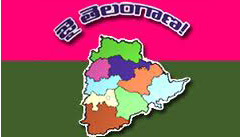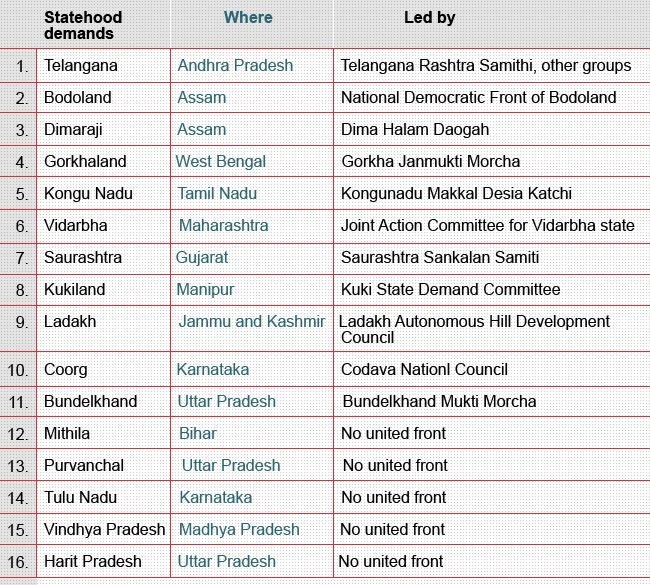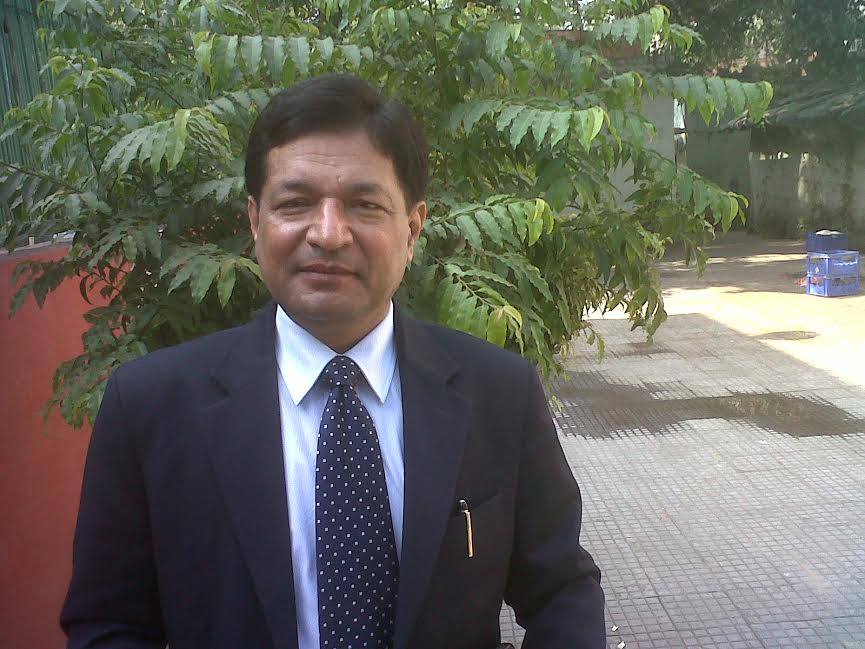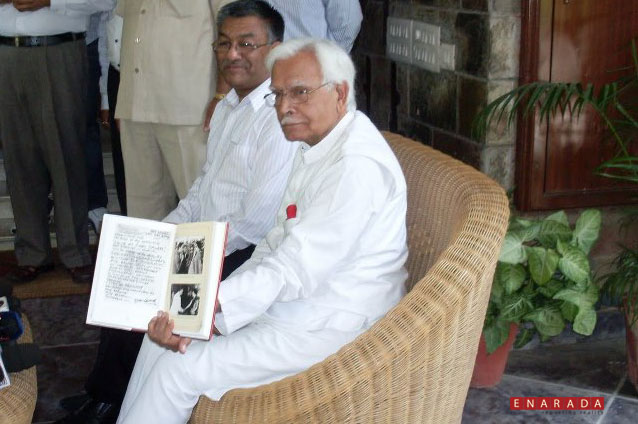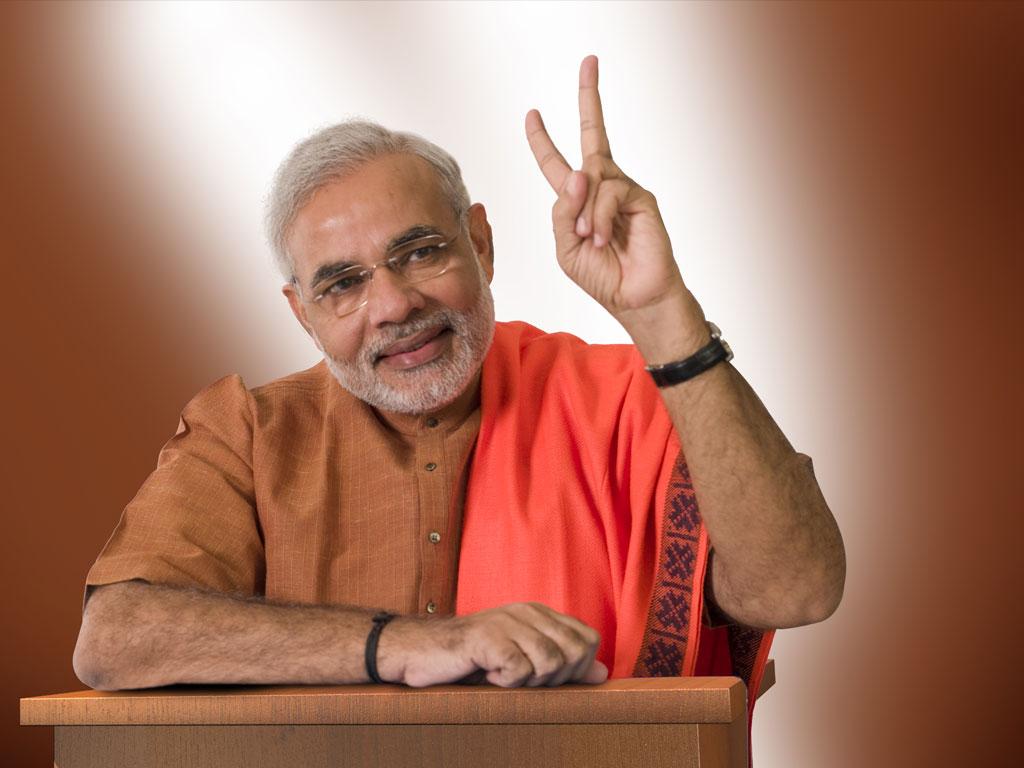ENARADA, New Delhi
By Ajay N Jha
The headline of a prominent national newspaper screamed “A 66 years old Mother India giving birth to its 29th baby – Telangana” and that sums up all.
After a lot of dithering and dragging its feet for many years, the Congress’s highest decision-making body, Congress Working Committee (CWC) on Tuesday (30th July) approved the carving out of Telangana from Andhra Pradesh to shore up the party’s political fortunes in the region.
Ajay Maken, the Chief party spokesperson and AICC General Secretary told media in the evening “It has been resolved to request the Central government to take steps in accordance with the Constitution to form a separate state of Telangana…within a definite time frame”, stated a resolution adopted at the meeting.
Ajay Maken, said the Congress has also recommended making Hyderabad a joint capital of the newly-proposed state and the other regions — Rayalaseema and coastal Andhra — for a period of 10 years. The process of setting up a new state will take four to five months.
As per the scheme of things, 10 districts — Adilabad, Karimnagar, Warangal, Khammam, Nalgonda, Hyderabad, Mahbubnagar, Rangareddy, Medak and Nizamabad — will be part of Telangana. It will get 17 of 42 Lok Sabha seats and 119 of 294 assembly seats.
Digvijay Singh, Congress general secretary and Andhra Pradesh in-charge, said the decision was made keeping in mind the long-standing demand of the people of Telangana. “Security, water issues and liabilities will be considered while drafting of the bill. Modalities will be worked out.”
According to political pundits, the timing of this monumental announcement is near-perfect. The Congress party appears to have hit two birds with the same stone. On the one hand, the Congress is expected to capitalise on this to get the Telangana Rashtra Samiti (TRS), the main driving force behind the demand for a separate statehood, to merge with it ahead of the general elections next year. On the other hand, it would like to checkmate the growing importance of YSR Congress Supremo YS Jagan Mohan Reddy who appears to be hell bent on spoiling the Congress poll plan in 2014.
The problem of Telangana has one of the most difficult in the Indian history, having its roots in colonial period and different administrations of Andhra Pradesh’s regions during the British rule over India. Today, the focus is on the lack of water resources in rural areas and absence of job prospects for young people. The population of the 10 districts suffers chronic shortages of water during persistent summers of drought. According to supporters of separation, the Andhra region has been constantly favored by state government. In past years, numerous cases of suicides among young students and farmers have been recorded across the region.
During colonial times, Telangana was ruled by a Muslim sovereign, the Nizam of Hyderabad, who reigned over the Hyderabad state, an autonomous region but directly linked to Great Britain; the remaining areas of current Andhra Pradesh (Coastal Andhra and Rayalaseema) were instead directly administrated by the British Raj under what was called as Madras Presidency. The arrangement resulted in different levels of economic and social development between the two areas.
The political movement for the separation of Telangana emerged in the late 1960s and then found new life in the last decade after the birth of three new states in the Indian Federation: Uttarakhand, Chhattisgarh and Jharkhand. However, the Telangana issue is essentially an economic problem, not linguistic, ethnic or religious.
The response of political parties has been ambivalent. Several political parties were seen making just the right noise but never forced the situation to the final point. Telangana Rashtra Samithi (TRS), led by K Chandrashekar Rao, is the only party created specifically on an agenda for the birth of Telangana as a separate state.
Now, questions are being asked if the Creation of Telangana was guided by the simple logic of political expediency and electoral math or for the exigency of self-preservation. Or is it because of the apprehension that if Telangana had not been announced, Congress would have been wiped out in both the Andhra and Telangana regions in 2014.
A lot has happened between the 9 December 2009 by no less a person than P Chidambaram, then Home Minister and his U turn within two weeks followed by three-and-a-half years and a full-fledged people’s agitation for the Congress to make yet another announcement on the creation of Telangana.
On the face of it, Telangana announcement is a good decision even though it has been arrived at through a process of self-serving logic. Good intentions can sometimes lead to bad results (as BJP’s India Shining campaign did in 2004) and dubious intentions sometimes result in good decisions.
What the Congress party has not been able to gauge is the chain reaction that would follow now. Once you accept the logic of smaller states, you have to carry it through. We need smaller states and India could conceivably have at least 50 states, including city-states.
The demand for smaller states is not new, and similar cries have been heard from time-to-time, sometime on basis of ethnicity, and increasingly on basis of a demand for better governance and rapid development. The country has witnessed people’s agitation based on this demand. According to estimates, a rational re-organisation of the federal country into smaller states will give India around 50 states. In mid 1970s, Prof. Rasheeduddin Khan had argued for 56 states, on the basis of social and cultural factors.
Secondly, it raises a bigger question of governance. India does not just need smaller states, but more empowered states. Smaller states without greater economic and constitutional empowerment can amount to nothing. The ultimate reasoning behind smaller states is empowerment. India needs to become an Empowered States of India and not just a Union of States, as the Constitution says without giving states enough powers. There are still more than 45 districts in this country which are spread across a radius of 90 to 100 kms and governance becomes a joke.
The creation of Telangana could be seen in that context as well. The most important part is that smaller states mean key decisions will be taken closer to the ground. Just as Delhi should not take decisions on food security for Chhattisgarh, Mumbai should not decide what is good even for Vidarbha, where farmer suicides have blotted the landscape endlessly. The simple logic is that Solutions to Vidarbha lie closer in Nagpur.
Moreover, administering large and diverse states is more complex and probably inefficient as well, though there can be economies of scale in some ways. Size cuts both ways. But it stands to reason that politics can be much more focused when the administrative area and population are of manageable proportions.
The fact remains that even today ,many Indian states are simply too big for their own good. Even after the creation of Telangana as the 29th state, the average Indian state will have 42 million people – though actual sizes vary widely from the 200-and-odd million of Uttar Pradesh to states such as Arunachal, with just a few thousand people scattered all over.
A case in the point is the European Union, with as many states as India currently (28) has and with average per-country population of 18 million. Similarly, the 50-state USA has an average state population of just 6.25 million. It has been driven by the belief that those smaller states bring the rulers and the ruled closer to one another physically and emotionally – and in a democracy that is a very good thing.
Moreover, a key reason why smaller states are better is that smaller states reduce diversity. High diversity makes for complex political and administrative calculations. The whole point of creating linguistic states in the 1950s was that they would improve administrative efficiency. Consider how difficult it would have been to administer the Bombay Presidency with at least two major languages (Marathi and Gujarati), or the Madras presidency (with four major linguistic groups to manage – Tamil, Telugu, Kannada and Malayalam).
According to a veteran political commentator “The logic now needs to extend downwards. Diversity is not only about language but economic and cultural diversity too. Coastal Andhra has a different economic culture compared to Telangana. Vidarbha is different from Marathwada and western Maharashtra or coastal Maharashtra or Mumbai. Resources cannot be efficiently allocated when there is so much diversity since the power structures so created will hijack them for their own ends.”
He argues that smaller states will not eliminate political or policy paralysis, but they will ensure that excess diversity is not the reason for such paralysis. The story of India’s current political logjam – where regional powers try to block or hijack central resources for their own ends – does not bear repetition in the larger states.
Another reason that would have impelled the Congress High command about Telangana would relate to empowerment of small State. Hyderabad may be right in the middle of the State and Telangana’s problem may not have been the distance from the power centre at the State capital but a complete disconnect with the power structure that paid obeisance to politicians from the richer coastal districts of Andhra. That is how the development needs of Telangana as of one of the poorest regions of Andhra got ignored despite having the power centre right there.
More than that, it has been the capture of the power centre by Andhra elites with little commitment to Telangana. It is an open secret that many Andhra politicians and business families own huge amounts of vast land in Hyderabad. The YSR, who was opposed to Telangana, and his son Jagan Mohan Reddy, are both linked to covert land grabs.
One of the reasons why Telangana has been so delayed is that Andhra politicians with benami land holdings had to seek ways to reduce their exposure to Telangana and invest it in the remaining parts of Andhra which will now see a land price boom.
However, there are bigger challenges before the Congress party as well as the UPA government now. While the majority of Congress leaders in Delhi have hailed this move as a master stroke, others are see it as a huge danger signal
1 . A few Congress leaders admit in private that the decision on Telangana could lead to unrest and prolonged agitations in parts of Uttar pradesh, Assam, West Bengal, Maharashtra and other parts of the country where people have been demanding the formation of new states.
2. Creation of Telanga is likely to lead to heartburn in several regions and that could lead to a spurt in protest and violence in several areas. Bodo and Gorakha leaders have already given a bundh call in support of their cause- Bodoland in Assam and Gorkhaland in West Bengal while leaders advocating the creation of harit pradesh or paschim pradesh out fof Uttar pradesh , Bundelkhand from Uttar pradesh and Madhya pradesh and Vidarbha from Maharashtra are also gearing up for launching fresh agitation.
4. The Union Home ministry had already received resolutions passed by Uttar Pradesh Assembly in 2001 for the division of Uttar pradesh into four parts- Poorvanchal, bundelkhand, Avadh pradesh and Paschim pradesh. The other state demands raised in the recent past include Saurashtra in Gujarat, Coorg in karnataka, Koshalanchal on Western Odisha and mithilanchal in northern Bihar.
5. The centre would find it extremely difficult to settle complex issues between Telangana and Andhra Pradesh with regard to water distribution, cadre, finance and pensions.
6. Apart from the danger of new kind of law and order problem because of a possible clash between pro and anti-telangana supporters, this decision could give a new lease of life to the naxal movement in Andhra pradesh that has been on a decline during the past few years.
7. The centre has already dispatched 2000 para military troops to Hyderabad to tackle the law and order situation arising out of spontaneous protest in various parts of Andhra Pradesh. This is likely to stretch them a bit too far since the Centre has already deployed a huge amount of para military forces in naxal –prone areas like chhattishgarh and Jharkhand.
8. Instead of taking a decision on the creation of Telangana state with pure political considerations in mind, both the Congress party could have asked the UPA Government to form a second States reorganization Commission which is long overdue. The commission could have come out with some realistic answers to many complex problems.
9. It appears that in the name of Telangana, the Congress party appears to have opened up a Pandora’s box which is going to make its own poll prospects miserable in 2014.
(Posted on August 1, 2013 @ 4.00pm)
(Ajay N Jha is a veteran journalist from both Print and Electronic media. He is the President and CEO of WICS Global Communications. His email id is Ajay N Jha <ajayjha30@gmail.com> )
The views expressed on the website are those of the Columnists/ Authors/Journalists / Correspondents and do not necessarily reflect the views of ENARADA.

